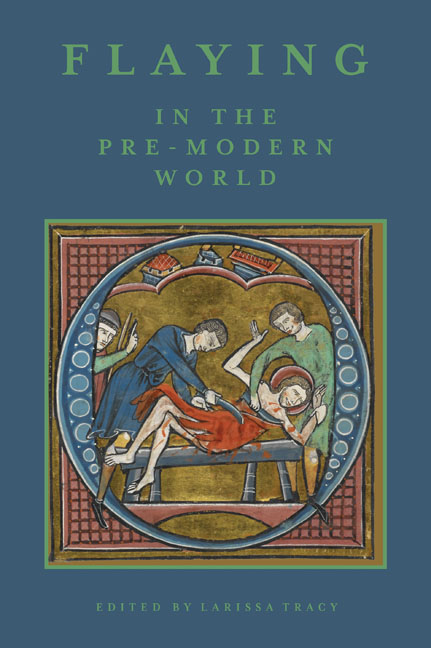3 - Flesh and Death in Early Modern Bedburg
Published online by Cambridge University Press: 21 May 2021
Summary
Is my body then / But penetrable flesh?
And then no wolf at all lay in front of the hunter but the bloody trunk of a man, headless, footless, dying, dead.
GERMANY in the late sixteenth century was marked by a volatile conflict between witches and werewolves (who inflamed the popular imagination), and the authorities who sought to destroy them. The Continental witch trials, with their reports of shape-shifting, sexual perversion and cannibalism, filled the pages of the popular press, and public executions were staged as both a sop to the public's bloodlust and a powerful deterrent. Read in terms of the sixteenth-century concept of convenientia, or resemblance by contiguity, the tools of the executioner – axes, hatchets, swords, hammers, tongs – used at each stage of the punishment invoke specific aspects of the crimes they punish, thereby mapping the misdeeds onto the body of the criminal.
Moreover, concurrent with the rise of witch hysteria in late-sixteenthcentury Germany was the growth of the science of anatomy. The dissection tools of its most famous practitioner, Vesalius, bear a remarkable resemblance to the instruments used by the executioner (Fig. 3.1). Indeed, anatomists and executioners shared a common purpose: to dismantle the human body, albeit for very different purposes. Early-modern anatomy's fascination with probing the inner workings of the body was countered by the public's fear of slipping into the morass of dark forces operating just beneath the skin of the world. One of the driving forces behind the witchhunts was, in fact, the fear of metamorphosis or shape-shifting, which threatened the already uneasy balance between appearance and reality. It was a phenomenon that galvanized religious and secular authorities, electrifying a populace that was both terrified and transfixed by accounts of a devil that could cross the borders of the human body and turn ordinary men and women into ravening beasts. This, then, was the uneasy episteme which permeated the sixteenth-century German psyche when, in 1589, in Bedburg, a small town near Cologne, authorities arrested a man suspected of turning into a werewolf and savagely abducting, raping and murdering more than sixteen men, women, and children over a twenty-five-year period.
- Type
- Chapter
- Information
- Flaying in the Pre-Modern WorldPractice and Representation, pp. 71 - 90Publisher: Boydell & BrewerPrint publication year: 2017



